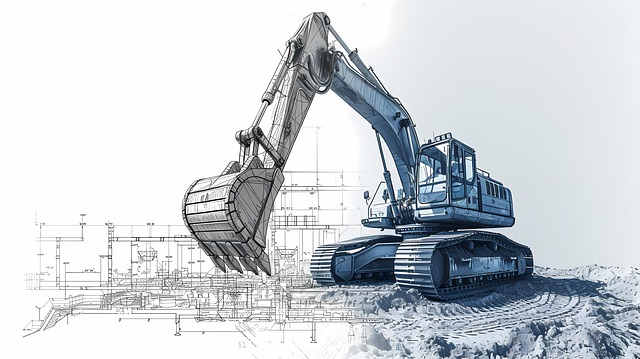Architectural drafting and design meticulously transform abstract concepts into detailed blueprints, balancing aesthetics and functionality. Skilled draftspersons create precise drawings with dimensions, materials, and finishes, bringing architects' visions to life from classic elegance to modern minimalism. This process enhances visual appeal, ensures structural integrity, and serves as critical guides for construction, culminating in captivating, harmonious spaces.
Architectural detailing is more than just aesthetics; it’s the art of crafting spaces that balance form and function. From exterior facades captivating passersby to interior layouts inviting residents, precise architectural drafting lies at the heart of this process. This article delves into the multifaceted world of interior and exterior detailing, exploring how skilled drafting enhances structural beauty while catering to user needs. We examine techniques for creating vibrant, functional spaces that leave lasting impressions, blending aesthetics with practicality in every stroke.
The Role of Architectural Drafting in Creating Aesthetic Detailing
Architectural drafting plays a pivotal role in bringing aesthetic detailing to life, transforming raw designs into visually captivating spaces. Skilled architects utilise precise drafting techniques to translate their creative visions into detailed blueprints, ensuring every element aligns with functional and aesthetic requirements. This meticulous process involves intricate drawings that showcase dimensions, materials, and finishes, allowing for a comprehensive understanding of the final product.
Through architectural drafting, designers can explore various stylistic elements, from classic elegance to modern minimalism. They meticulously draft each architectural detail, be it elaborate moldings, ornate balconies, or sleek geometric lines, ensuring these features not only enhance the beauty but also serve practical purposes. The result is a harmonious blend of form and function, where aesthetic detailing complements the overall design philosophy, creating spaces that captivate the senses and inspire.
– Understanding architectural drafting and its impact on design aesthetics
Architectural drafting is a fundamental process that significantly influences the visual appeal and overall functionality of both interior and exterior spaces. It involves creating detailed drawings and plans that translate an architect’s vision into tangible, structural elements. Skilled draftspersons use precise lines, dimensions, and notations to communicate complex ideas, ensuring every element is meticulously considered before construction begins.
This meticulous process goes beyond simple drawing; it is a powerful tool for enhancing design aesthetics. By carefully drafting floor plans, elevations, and sections, architects can create visually appealing spaces that cater to both form and function. Through architectural drafting, designers can explore various materials, textures, and finishes, ensuring the final product not only meets functional requirements but also captivates the senses with its aesthetic appeal.
– Techniques for incorporating visual appeal through drafting
Incorporating visual appeal into architectural designs is a meticulous art, and architectural drafting plays a pivotal role in achieving this balance between aesthetics and functionality. Skilled draftspersons employ various techniques to transform two-dimensional plans into captivating visuals that capture the essence of a structure. One such method involves utilizing intricate line work and shading to emphasize key features, creating depth and dimension on flat surfaces. This technique not only enhances the overall beauty of the design but also aids in communicating complex spatial arrangements to clients and builders.
Moreover, architectural drafting allows for the exploration of different styles and themes. Drafters can create detailed renderings that showcase the interplay of light and shadow, play with textures, and incorporate organic elements to evoke emotions and tell a visual story. By combining technical precision with creative flair, they craft designs that not only please the eye but also serve as functional blueprints for construction, ensuring that the final product is both visually stunning and structurally sound.
– Examples of how precise drafting enhances structural beauty
Precise architectural drafting plays a pivotal role in enhancing structural beauty, both internally and externally. Consider the meticulous lines and dimensions that define a building’s frame—each element contributes to the overall aesthetic appeal. For instance, in modern designs, clean, sharp lines create a sense of sophistication and minimalism, while traditional architecture often boasts intricate detailing, such as ornate moldings and elaborately carved joists, adding depth and historical charm.
These precise draftsmen translate into functional design elements too. Accurate measurements ensure that doors fit perfectly, windows align with external frames, and fixtures are securely fastened. Such meticulousness not only elevates the visual appeal but also guarantees the longevity of the structure. It’s about creating a harmonious balance where every line, angle, and curve contributes to both the beauty and stability of the building.
Architectural drafting plays a pivotal role in bringing aesthetic and functional designs to life. By utilizing precise techniques, architects can enhance structural beauty while ensuring optimal functionality. Incorporating visual appeal through drafting not only captivates the eye but also creates harmonious spaces that serve both form and purpose. In essence, architectural drafting is an art that refines our built environment, making it both aesthetically pleasing and structurally sound.
